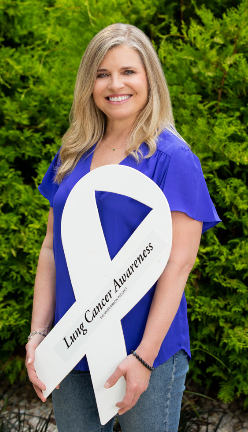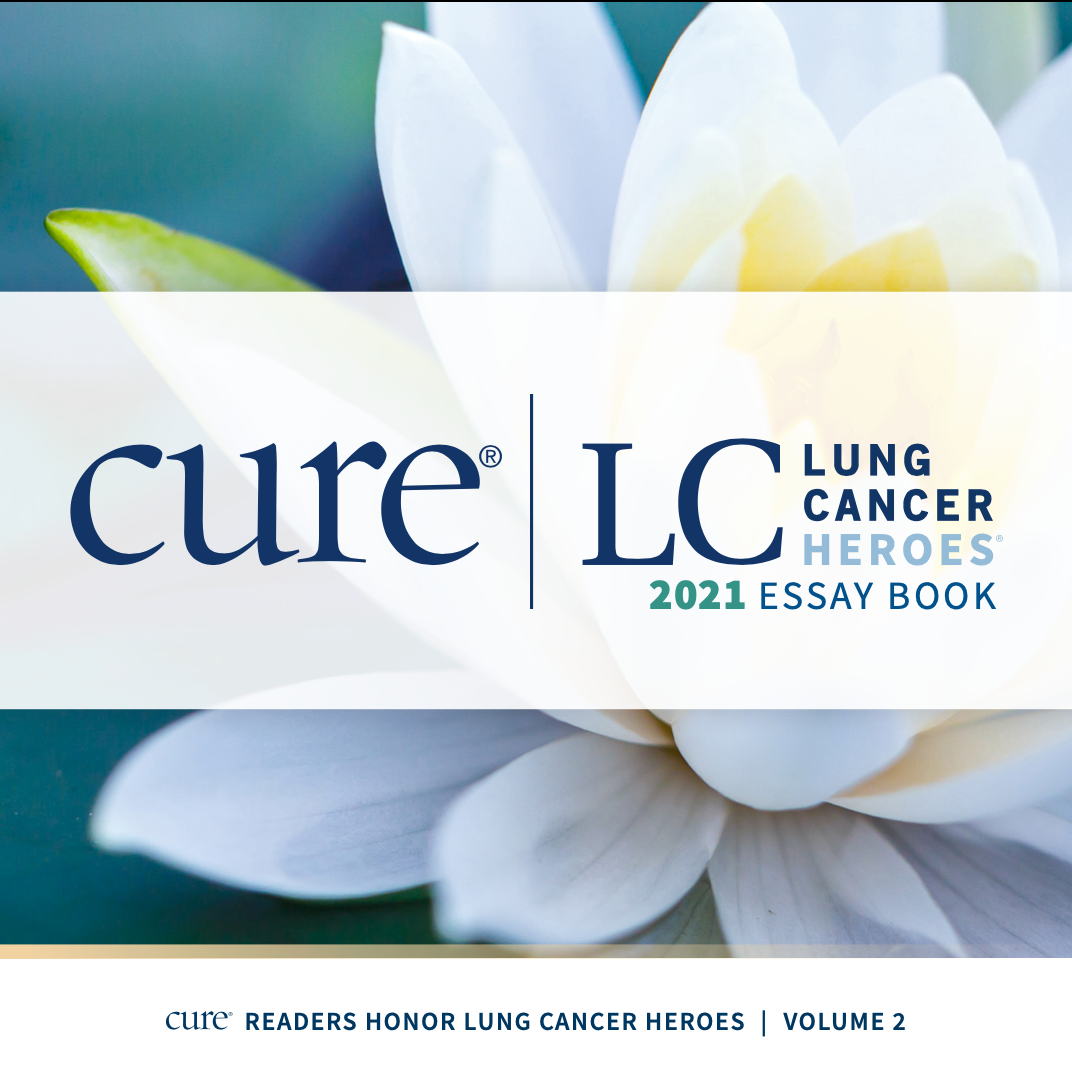Publication
Article
Lung Cancer Heroes®
Breaking the Stigma: Anyone Can Get Lung Cancer
Author(s):
Not having known much about lung cancer, a woman describes her shock at receiving a diagnosis despite being a non-smoker.
Heidi Nafman-Onda of Denver was just 55 years old when she felt a familiar pain. The lifelong fitness enthusiast and health educator had a history of ovarian cysts and suspected she’d developed another. She saw her gynecologist, but tests came back negative. Her doctor then sent her for a CT scan of her chest, abdomen and pelvis.
The results were shocking. Doctors found a 2.5-centimeter mass in the upper lobe of her left lung and what she describes as two “plump” mediastinal lymph nodes. A subsequent positron emission tomography (PET) scan and biopsy confirmed the diagnosis: stage 3 adenocarcinoma of the lung.
Heidi Nafman-Onda stands with the white ribbon her husband, Pierre, created that would eventually lead to Nafman-Onda developing The White Ribbon Project to increase awareness around lung cancer.

With no history of smoking, Nafman-Onda couldn’t believe the diagnosis — nor could her husband, Pierre, a primary care physician.
“As people with a background in prevention, how could we not know that I was at risk for lung cancer?” she says. “I knew that if we didn’t know, others didn’t know either. The only message out there is, ‘Don’t smoke, and you won’t get this.’ That clearly is not true.”
Nafman-Onda says raising awareness and educating people about lung cancer risk is critical. “Each year, lung cancer kills more people than breast, colon and prostate cancer combined,” she says. “Yet lung cancer research is underfunded. That’s unacceptable. Over 235,000 of us are diagnosed every year.”
Her frustration with the lack of attention paid to lung cancer continued to grow. Nafman-Onda says she spent months trying to find out what cancer centers were planning to do for Lung Cancer Awareness Month in November. Getting no good answers, she took matters into her own hands.
Her husband had taken up woodworking as an outlet during her illness, so she asked him to make her a ribbon from plywood. They painted the 2-foot tall ribbon white and emblazoned it with the words, “Lung Cancer Awareness.”
Nafman-Onda put the ribbon on her front door and posted a picture of it in a private Facebook group for survivor advocates in Colorado. Soon, others asked if she could make ribbons for them, and The White Ribbon Project was born.
“It was my way of taking back some control in my life,” she says. “I can scream from my front door that anyone with lungs can get lung cancer. I didn’t have to ask for permission to do that, and it made me feel like there was something I could do.”
The white ribbons have become a symbol of hope and visibility for lung cancer advocates. Nafman-Onda keeps hers in the background of Zoom calls with other survivors and advocates. She takes it out to public landmarks and shares photos on social media. She’s even taken it to medical offices for photos with doctors and staff.
Today, The White Ribbon Project has created 767 wooden ribbons that Nafman-Onda has distributed to lung cancer survivors, researchers, physicians and advocates across the country. She says the organization is in the process of becoming a 501(c)(3).
The White Ribbon Project is all about getting ribbons to people so they don’t feel alone, she says. But it’s also about keeping lung cancer visible.
“Lung cancer has been a hidden epidemic because it’s been unfairly stigmatized,” she says. “People get the diagnosis, they’re overwhelmed and then they hide.”
No more hiding, Nafman-Onda says. People with a smoking history need to get screened. And everyone needs to know they’re at risk regardless of whether they have a history of smoking.
After being treated with chemotherapy and radiation simultaneously, followed by immunotherapy, Nafman-Onda says she’s doing well and remains focused on raising awareness.
“These ribbons have become an amazing symbol,” she says. “There’s a power in their uniformity. Doctors have thanked us for making them. The key to breaking a stigma is to humanize it.”
For more news on cancer updates, research and education, don’t forget to subscribe to CURE®’s newsletters here.





